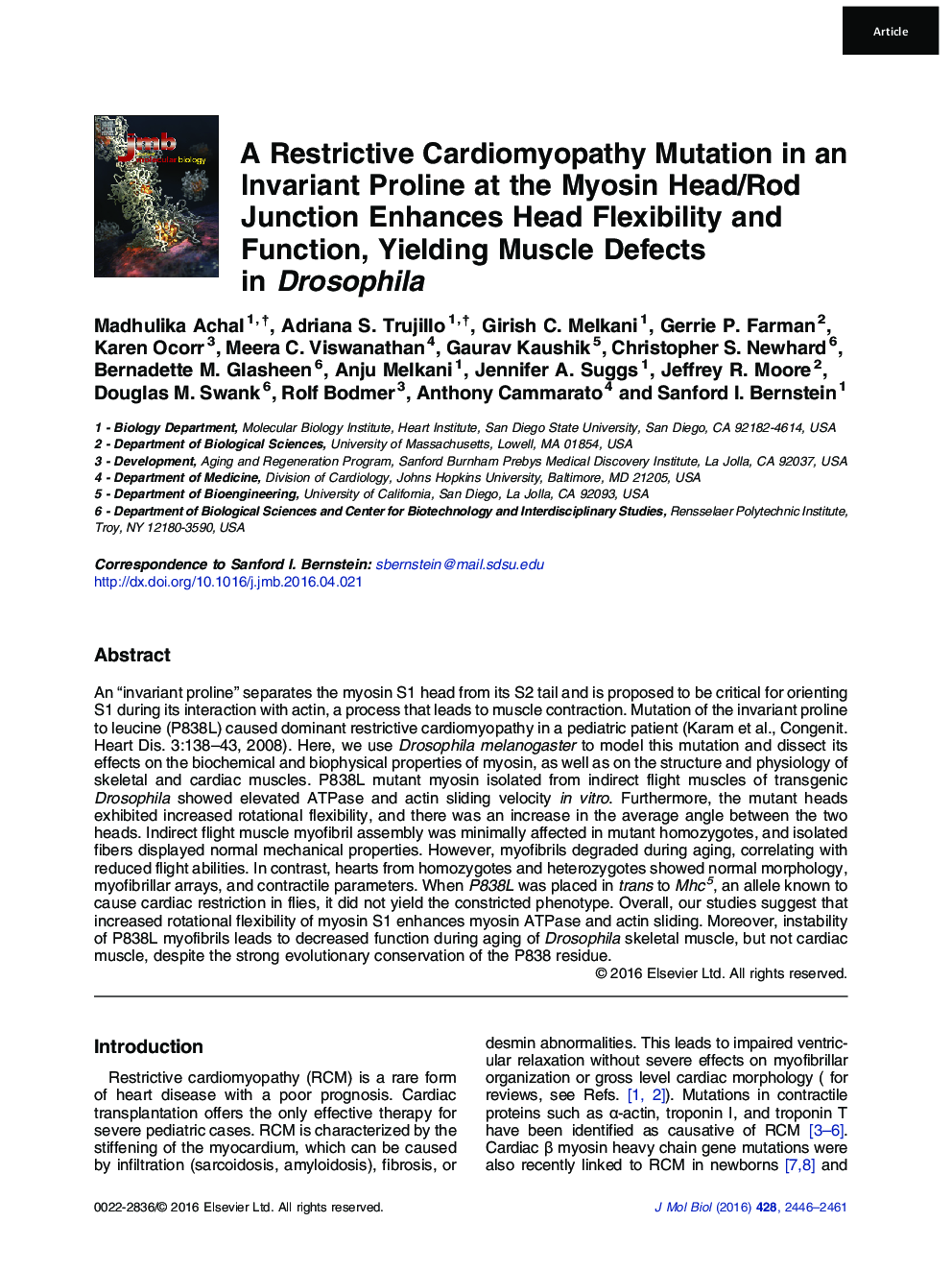| کد مقاله | کد نشریه | سال انتشار | مقاله انگلیسی | نسخه تمام متن |
|---|---|---|---|---|
| 2184354 | 1095831 | 2016 | 16 صفحه PDF | دانلود رایگان |

• Restrictive cardiomyopathy can arise from mutations in contractile proteins.
• Myosin mutation P838L at the motor/rod junction was found in an RCM patient.
• Drosophila P838L myosin has increased biochemical/biophysical functionality.
• P838L flies show decreased flight and indirect flight muscle myofibril stability.
• The P838L mutation did not produce a cardiomyopathy phenotype in Drosophila.
An “invariant proline” separates the myosin S1 head from its S2 tail and is proposed to be critical for orienting S1 during its interaction with actin, a process that leads to muscle contraction. Mutation of the invariant proline to leucine (P838L) caused dominant restrictive cardiomyopathy in a pediatric patient (Karam et al., Congenit. Heart Dis. 3:138–43, 2008). Here, we use Drosophila melanogaster to model this mutation and dissect its effects on the biochemical and biophysical properties of myosin, as well as on the structure and physiology of skeletal and cardiac muscles. P838L mutant myosin isolated from indirect flight muscles of transgenic Drosophila showed elevated ATPase and actin sliding velocity in vitro. Furthermore, the mutant heads exhibited increased rotational flexibility, and there was an increase in the average angle between the two heads. Indirect flight muscle myofibril assembly was minimally affected in mutant homozygotes, and isolated fibers displayed normal mechanical properties. However, myofibrils degraded during aging, correlating with reduced flight abilities. In contrast, hearts from homozygotes and heterozygotes showed normal morphology, myofibrillar arrays, and contractile parameters. When P838L was placed in trans to Mhc5, an allele known to cause cardiac restriction in flies, it did not yield the constricted phenotype. Overall, our studies suggest that increased rotational flexibility of myosin S1 enhances myosin ATPase and actin sliding. Moreover, instability of P838L myofibrils leads to decreased function during aging of Drosophila skeletal muscle, but not cardiac muscle, despite the strong evolutionary conservation of the P838 residue.
Graphical AbstractFigure optionsDownload high-quality image (221 K)Download as PowerPoint slide
Journal: Journal of Molecular Biology - Volume 428, Issue 11, 5 June 2016, Pages 2446–2461